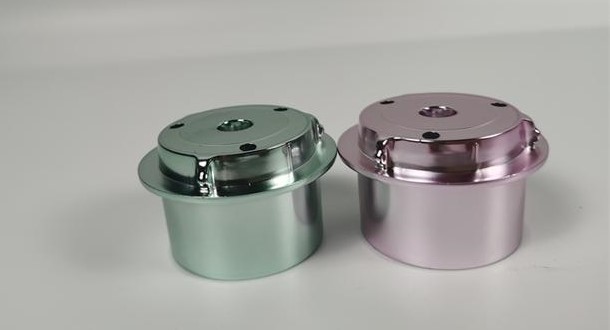When Should Vacuum Plating Be Used in Rapid Prototyping?

Rapid prototyping has speeded up product development for firms. The vacuum plating technique is one of many used in this procedure, offering a surface treatment option. Then, when should vacuum plating be used in rapid prototyping?
Vacuum plating in rapid prototyping improves aesthetics, durability, and electrical conductivity. These characteristics make it an ideal method for producing high-quality, functional prototypes that meet the strict standards of many industries.
This article discusses vacuum plating’s optimal uses and why fast prototyping companies use it.
Benefits of Vacuum Plating for Rapid Prototyping
Due to its many benefits, vacuum plating is used by many businesses for rapid prototyping. The main advantages:
Customizable Appearance
The approach lets designers choose between bright, matte, and colorful metallic coatings to get their desired effect.
Improved Durability
The metal coating greatly enhances wear resistance, making prototypes more robust for handling and testing.
Toughness to impact
The metal coating can prevent physical damage during testing.
Conductive Properties
Vacuum plating can give non-conductive substrates electrical conductivity, making it ideal for prototypes that need to test electronic components or have conductive channels.
Thermostability
The metal coating makes the prototype more heat-resistant, making it perfect for severe testing.
Anti-corrosion Protection
The coating can protect the prototype from damage, ensuring its endurance and reliability during testing.
Minimal Weight
Despite adding a metal coating, vacuum plating does not significantly increase prototype weight. It keeps the prototype acceptable for weight-sensitive scenarios.
Cost-effective for Short Runs
For small production runs and prototypes, vacuum plating is cheaper than traditional metal coating because it removes setup costs. Small batches cost less.
Capability to Change
Vacuum plating works on plastics, glass, ceramics, and metals. It makes prototype design and material selection more flexible.
Enhanced Prototype Performance for Functional Testing
Since vacuum plating enhances prototype physical properties, functional testing is more accurate. It ensures the final product meets design and performance standards.
Obtainable Evaluation
Vacuum-plated prototypes are designed to closely mimic the final product’s parts to simulate its appearance and operation.
Visual Prototypes
Visual prototypes are a key use of vacuum plating in rapid prototyping. Marketing, displays, and business presentations often use prototypes, which should look like the final product. Vacuum plating gives plastic objects a metal-like gloss. It is crucial for product aesthetics.
Functional Prototypes
Vacuum plating can extend the lifespan of working prototypes undergoing rigorous testing. Due to its wear-resistant metal covering, these prototypes are great for performance testing. It is crucial in aircraft and automobiles, where components must survive extreme environments.
Heat- And Corrosion-Resistant Prototypes
When testing prototypes in high temperatures or corrosive environments, vacuum plating can protect them. Metal coating makes prototypes heat- and corrosion-resistant, ensuring they work well.
Selecting Rapid Prototyping Companies
Vacuum plating is essential while searching for rapid prototyping companies for your project. Partnering with a vendor who can apply this strategy can improve your prototypes’ quality and usability because not all firms have these capabilities.
FAQs
How long does vacuum plating take?
The vacuum plating time depends on the project’s needs, prototype complexity, and size. It may take hours or days to complete this task.
Can any prototype material can be vacuum-plated?
Vacuum plating is most common for plastic and metals. Other materials like glass and ceramics can be coated if the substrate material and coating technique are compatible. It depends on individual needs.
Are there any restrictions for vacuum plating?
Vacuum plating has several benefits. However, it may not work for all prototypes or materials. Its main use is coating polymers, and more expensive than other finishing methods. It is its major use. It also requires specific talents and equipment.
How do I choose the best vacuum plating rapid prototyping company?
When choosing rapid prototyping companies, make sure they offer vacuum plating and have experience with it. Look for companies that use vacuum plating for high-quality prototypes. Reading reviews, case studies, and obtaining samples might help you decide.
One Last Thought
Vacuum plating improves prototype look, durability, and functionality in rapid prototyping. The vacuum plating tool is powerful. Knowing when to use vacuum plating might improve your visual models for presentations or functional prototypes for rigorous testing. With this understanding, you can excel. Always employ quick prototyping companies with vacuum plating knowledge for optimum results. It will ensure your prototypes meet the highest requirements.
Read More From Techbullion And Businesnewswire.com





